SOURCE: IAEA
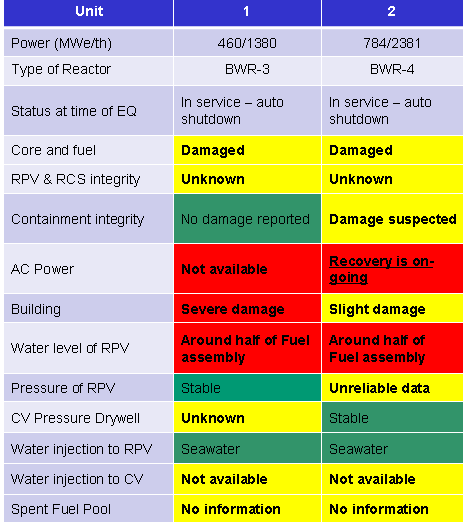
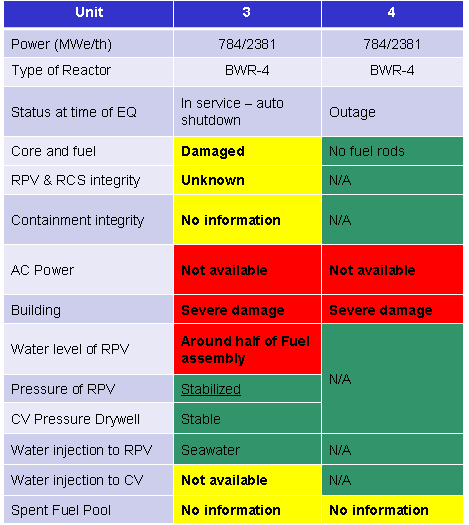
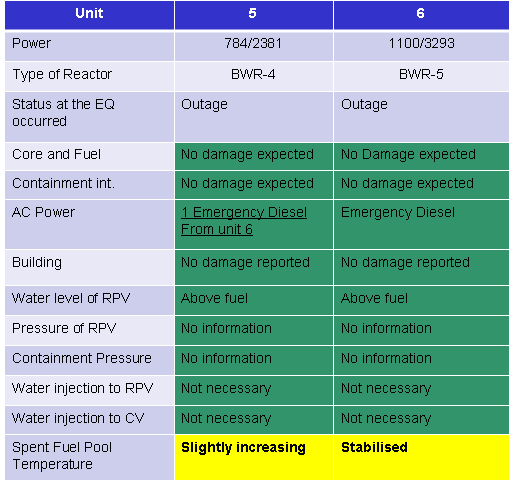
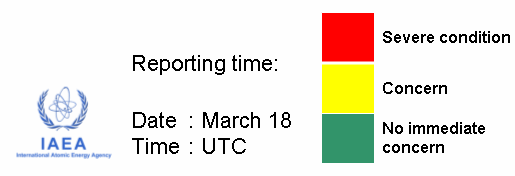
IAEA Fukushima Assessment March 18 was last modified: March 20th, 2011 by sbkrivit
SOURCE: IAEA




JOINT EPA/DOE STATEMENT: Radiation Monitors Confirm That No Radiation Levels of Concern Have Reached the United States
Release date: 03/18/2011
Contact Information: NEWS MEDIA CONTACT FOR EPA: press@epa.gov, 202-564-6794 / NEWS MEDIA CONTACT FOR DEPARTMENT OF ENERGY: (202) 586-4940
UPDATED – (please note differences in what was detected in Washington State and California)
WASHINGTON – The United States Government has an extensive network of radiation monitors around the country and no radiation levels of concern have been detected. The U.S. Environmental Protection Agency RadNet system is designed to protect the public by notifying scientists, in near real time, of elevated levels of radiation so they can determine whether protective action is required. The EPA’s system has not detected any radiation levels of concern.
In addition to EPA’s RadNet system, the U.S. Department of Energy has radiation monitoring equipment at research facilities around the country, which have also not detected any radiation levels of concern.
As part of the Comprehensive Nuclear Test Ban Treaty Organization’s International Monitoring System (IMS), the Department of Energy also maintains the capability to detect tiny quantities of radioisotopes that might indicate an underground nuclear test on the other side of the world. These detectors are extremely sensitive and can detect minute amounts of radioactive materials.
Today, one of the monitoring stations in Sacramento, California that feeds into the IMS detected miniscule quantities of iodine isotopes and other radioactive particles that pose no health concern at the detected levels. Collectively, these levels amount to a level of approximately 0.0002 disintegrations per second per cubic meter of air (0.2 mBq/m3). Specifically, the level of Iodine-131 was 0.165 mBq/m3, the level of Iodine-132 was measured at 0.03 mBq/m3, the level of Tellurium-132 was measured at 0.04 mBq/m3, and the level of Cesium-137 was measured at 0.002 mBq/m3.
Similarly, between March 16 and 17, a detector at the Department of Energy’s Pacific Northwest National Laboratory in Washington State detected trace amounts of Xenon-133, which is a radioactive noble gas produced during nuclear fission that poses no concern at the detected level. The levels detected were approximately 0.1 disintegrations per second per cubic meter of air (100 mBq/m3),
The doses received by people per day from natural sources of radiation – such as rocks, bricks, the sun and other background sources – are 100,000 times the dose rates from the particles and gas detected in California or Washington State.
These types of readings remain consistent with our expectations since the onset of this tragedy, and are to be expected in the coming days.
Following the explosion of the Chernobyl plant in Ukraine in 1986 – the worst nuclear accident in world history – air monitoring in the United States also picked up trace amounts of radioactive particles, less than one thousandth of the estimated annual dose from natural sources for a typical person.
As part of the federal government’s continuing effort to make our activities and science transparent and available to the public, the Environmental Protection Agency will continue to keep all RadNet data available in the current online database.
Please see http://www.epa.gov/japan2011 for more information.
SOURCE: Environmental Protection Agency
Due to the events in Japan and the heightened interest in radiation monitoring data, EPA has developed new content RadNet Map View which contains monitoring data and additional contextual information from EPA’s Radiation Protection Programs.
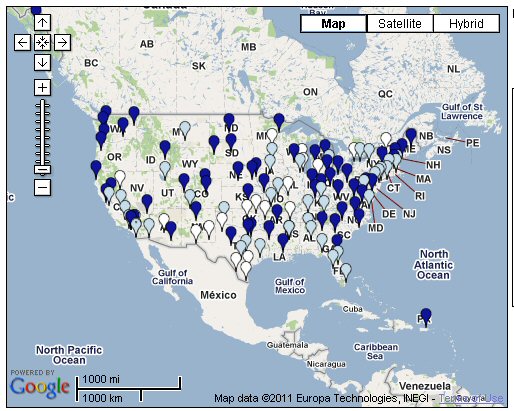
Japan Atomic Industrial Corporation provides updates on the Fukushima reactor status and major events.
| © 2025 newenergytimes.net |